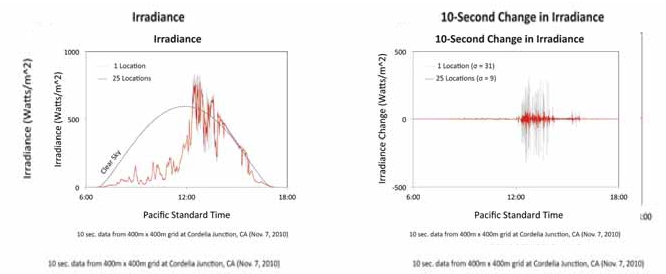By Thomas E. Hoff, Founder and President of Research and Consulting Group, Clean Power Research; Richard Perez, Research Professor, ASRC, University at Albany
As the PV capacity of utility systems increases, utility planners and operators are becoming more and more concerned about the potential impacts of power supply variability caused by transient clouds. Utilities and control system operators need to adapt their planning, scheduling and operating strategies to accommodate this variability while at the same time maintaining existing standards of reliability. Effective management of these systems, however, requires a clear understanding of PV output variability and the methods to quantify it. The present objective is to develop analytical methods and tools to quantify PV fleet output variability. This paper presents a method using location-specific inputs for estimating correlation coefficients, and discusses the key findings that resulted from applying the method to three separate geographical regions in the USA. The approach has potential financial benefits for systems that are concerned about PV power output variability, ranging from individual distribution feeders to state-wide balancing regions.



